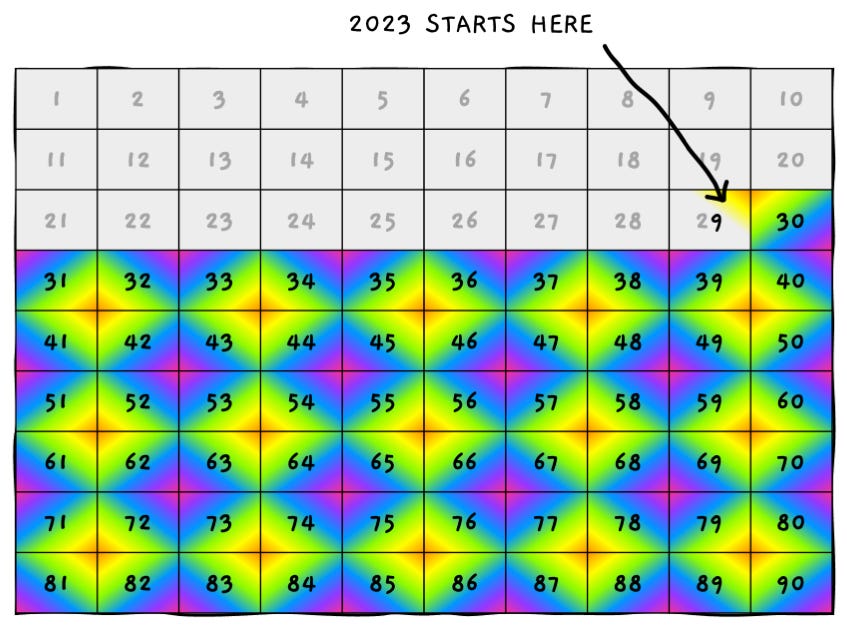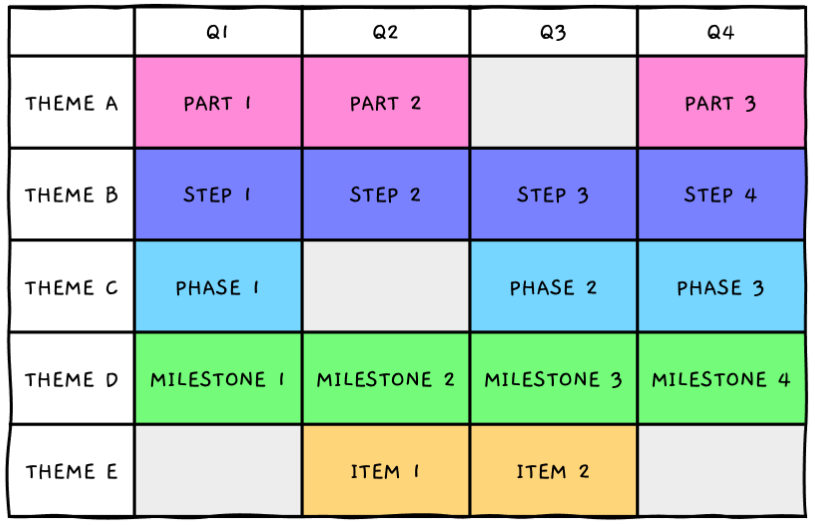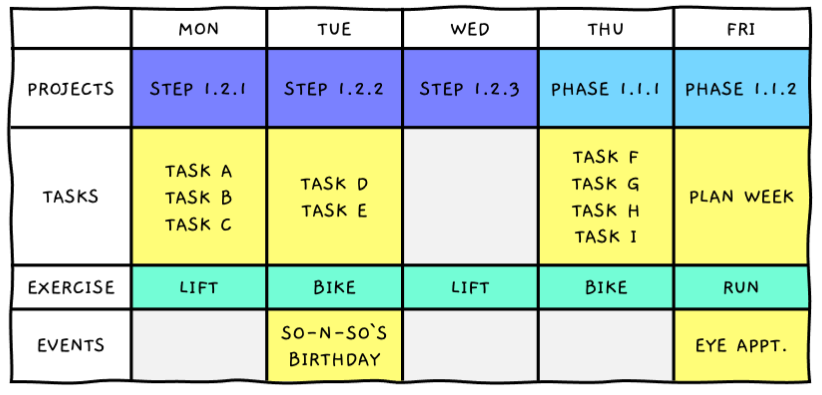11 January 2023
Four Frames
I have a document called “resolutions.doc,” where I log my new year’s resolutions. I’ve been writing resolutions for so long that the file predates Microsoft’s .docx format, and Word opens it in “compatibility mode.” As I sift through my archive, I see the same resolutions year after year because I repeatedly failed to achieve them.
My early resolutions were vague or overly ambitious, so it’s no wonder I failed. But even newer resolutions in the SMART goal format or habit-oriented still flopped. These attempts missed a fundamental component: A clear plan.
I wrote a personal narrative in 2021 inspired by Amazon’s six-page narratives. As lame and soulless as this sounds, the clarity I gained from writing a detailed plan helped me hit more resolutions than in any prior year.
But an annual narrative alone isn’t enough to achieve resolutions. As I learned throughout 2021 and 2022, I need to plan in multiple frames to be successful.
Four Frames
A plan must be granular enough to act on. Consider my cringe 2011 resolution to “break a world record.” It’s too high-level to execute. What kind of record? Why do I even want this?
But a plan must be large enough to have meaning. For instance, I once tracked a daily flossing habit. While flossing’s an excellent ritual, it’s not enough to reshape my life.
We need a mix of plans to balance strategy and tactics. For me, four frames of planning work best: yearly, quarterly, weekly, and daily.
Each year offers a spectrum of opportunities, and the annual plan defines a direction. 2023 is the year I turn 30, so crafting a clear direction can help me navigate the potentially choppy waters.

I list 5-7 themes aligned with my vision and write a paragraph about each and why it matters. Then, I plot a rough roadmap—breaking the initiatives across quarters.

Investment: 5 hours
Quarterly
Because I work a corporate job, I operate in three-month quarters: January to March, April to June, and so on.
Quarterly is my favorite planning frame because ninety days is enough time to accomplish something meaningful but short enough to sift through the details.
I begin by listing the highlights, lowlights, and learnings from the last quarter to celebrate my accomplishments and determine how to improve. I translate these learnings into 2-3 action items.
I’ll review my annual plan and adjust the scope if circumstances change. I’ll end up with 3-4 main initiatives that each consume more than a week of effort.
With my initiatives defined, I plan the next twelve weeks by plotting when to work on each. I don’t over-plan the weeks because I’ll adjust them later.

Investment: 2 hours
Weekly
Yearly and quarterly are big-picture, but weekly plans focus on execution.
I create my weekly plan on Friday afternoon since it gives me peace of mind before the weekend. Although it takes an hour, I earn that time back by reducing uncertainty for the coming week.
Like quarterly planning, I begin with a reflection and pick one action to incorporate into the week’s plan.
I look at my quarterly plan to find 1-3 projects. For instance, a Turtle’s Pace article could be a project that takes roughly five hours of research, writing, and illustration. Five hours is good, and I never plan anything larger than eight hours.
Along with the main projects, I list smaller tasks, like filing taxes, and mark which days I’ll do them.

Investment: 1 hour
Daily
The daily plan is 100% tactical.
The evening before, I review my weekly plan and block time for meetings, workouts, and other obligations. With the hours remaining, I optimize for uninterrupted periods, and I’ll typically block a couple hours in the afternoon for focused work.

I track my time allocation to gain this knowledge, such as hours spent in meetings vs. focused work. Seeing the daily and weekly trends help me better calibrate my workload.
Investment: 10 minutes
The Cost of Clarity
This four-frame planning program costs two hours per week, 26 hours per quarter, and 109 hours per year. Almost three work weeks! It’s not a trivial investment, but the clarity it creates saves a disproportionate amount of stress throughout the year.
